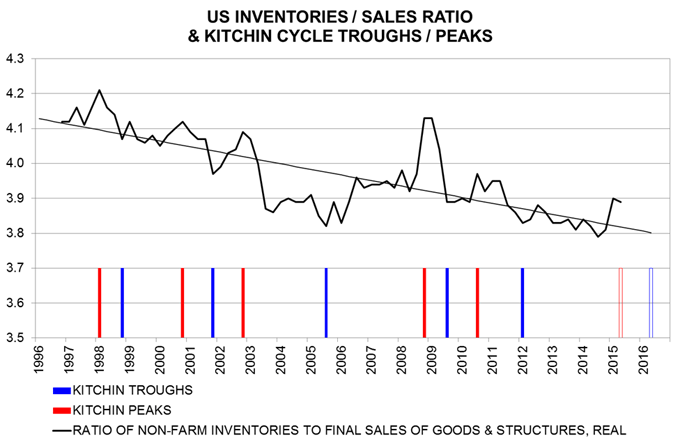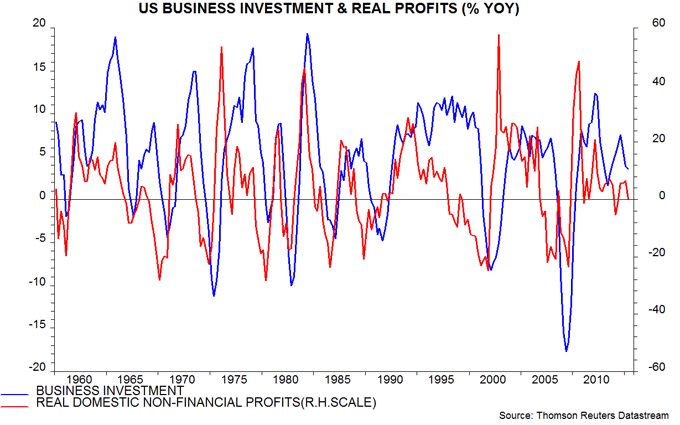US stocks cycle probably peaking
US inventories have risen to an elevated level relative to sales, suggesting that the 3-5 year Kitchin stockbuilding cycle is about to turn down. Together with slowing real narrow money expansion, this casts doubt on 2016 growth prospects.
A post in August 2014 argued that US economic fluctuations can be explained by the interaction of three cycles: the 3-5 year Kitchin stockbuilding cycle; the 7-11 year Juglar business investment cycle; and the 15-25 year Kuznets housebuilding cycle. Severe recessions, such as 2008-09 and 1974-75, occur when the three cycles reach a trough in the same year.
The post suggested that the Kitchin cycle last hit bottom in 2012. GDP grew by just 1.3% in the year to the fourth quarter of 2012, with economic weakness contributing to the Fed’s decision to launch QE3 in September. If this dating is correct, the cycle is scheduled to reach another low between 2015 and 2017.
A key indicator of the status of the Kitchin cycle is the ratio of inventories to final sales. The ratio typically moves significantly above its trend at cycle peaks, falling beneath it at troughs. It was above trend in the first and second quarters of 2015, with the deviation larger than at the last cycle peak in 2010 – see first chart.

A return of the ratio to trend requires a cut in the stock of inventories and / or a rise in final sales. With real money expansion slowing, final sales are unlikely to surge. Suppose that they grow by 2.5% over the coming year. The stock of inventories would then need to be held stable to return the ratio to sales to trend in 12 months’ time.
Inventories, however, were still rising fast in the second quarter – by the equivalent of 0.7% of GDP. A fall in the rate of change to zero, therefore, would imply a drag on GDP of this magnitude.
If the inventories to sales ratio were to fall beneath trend, as usually occurs at Kitchin cycle troughs, the implied drag would, of course, be larger.
As noted in the previous post, Kitchin cycle downturns, in isolation, are not usually associated with recessions. The Kuznets housebuilding cycle remains in an upswing. The Juglar business investment cycle is scheduled to reach another low between 2016 and 2020. Juglar downturns are almost always preceded by a profits squeeze. Economic profits* have stagnated over the past year but are not weak enough to suggest a fall in investment – second chart.
With prospects for business spending softening, personal consumption and housebuilding will need to make stronger contributions if GDP growth is to be sustained at its recent pace.
*Economic profits adjust for stock appreciation and over / underreporting of depreciation.


Reader Comments